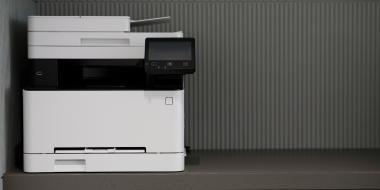How to discuss strengths and weaknesses in a cover letter
Since hiring managers are trained to perform thorough evaluations during the application and interview phases, your competencies and areas of improvement are bound to come up. Is it therefore a good idea to mention them in your cover letter? This article will provide you with sound advice on how to navigate this complex practice.

Emphasize your strengths relevant to the role
When figuring out how to highlight your strengths and weaknesses in a cover letter, it’s vital that you focus on the qualities that are relevant to the role you’re applying for.
Most cover letter articles will tell you to make it clear to the hiring manager that you’ll be a great asset to the company if given the opportunity to work there. As such, you should maintain a confident tone in your cover letter and emphasize the qualities that will make this obvious to them. Fortunately, there are a few ways to do this.
Quantify your achievements
Use cover letter and resume examples that show you how to use numbers and percentages to describe your achievements. For example, how many people did you manage in your last role? How many sales did you make this quarter? By what percentage have you increased customer satisfaction scores?
Quantifying your achievements makes the impact of your skills and expertise concrete, so the hiring manager won’t be able to miss it. It also suggests that you have the talent to reproduce those results in a new role.
Provide short anecdotes or examples
When discussing non-quantifiable skills and strengths (like being a team player), use anecdotes or examples of successful situations where you’ve had to use those skills. For example, you could mention a time when your team was struggling, but you jumped in to help them get the project done in time.
When bringing up these situations, make sure the outcome is positive and the story relates to something you’d likely encounter in the role you’re applying for.
Focus on the job description
To keep your achievements and examples relevant on your cover letter and resume, focus on highlighting skills that align with the job description. Doing so will ensure that you focus on traits and situations that are of high value to the hiring manager.
Be self-aware
Contrary to what many cover letter and resume articles imply, no hiring manager or recruiter expects any candidate to be perfect.
In fact, if a candidate believes they have no weaknesses, it’s usually a sign that they lack self-awareness, which is essential for skill development. It’s better to acknowledge that you have room for improvement in certain areas, as this helps you come across as humble and realistic.
To demonstrate self-awareness, consider presenting your weaknesses as opportunities for growth.
While hiring managers don’t need a candidate to know everything, they’ll want to know you’re committed to continual learning. If you can show them you understand the ways you need to grow, they’ll see you as someone who cares about their development and wants to bring their best to the table.
Expert Tip:
Discuss how you are improving
Although you want to show that you have room to grow, you don’t want to leave it there. When thinking about how to mention strengths and weaknesses in a cover letter, it’s important to remember that the recruiter and hiring manager will also want to know what you’re doing to shore up those weaknesses and refine your skills.
Offering a clear explanation of how you plan to improve conveys that you want to be an asset to the team. Here are several ways to go about it.
Highlight extra courses or certifications you’re pursuing
Attending courses or pursuing certifications outside of work hours indicates that you’re dedicated to gaining knowledge and bringing up your weaknesses. Including this information in your cover letter and resume templates shows a hiring manager that, if given the opportunity to improve, you’ll take advantage of it.
This tactic works even better when you can show how those courses or certifications have led to quantifiable improvements in your performance.
Mention opportunities from your potential employer
In some cases, you may be drawn to apply for a job because you’ve heard that the employer offers specific learning and development opportunities. Consider mentioning those opportunities in your cover letter as one of the reasons you’re excited to apply for the job.
Talk about mentorship or peer learning
Even if you haven’t had any formal learning opportunities, you can take some time to discuss the mentorship you’ve received from someone in a senior role or even from one of your more advanced peers.
Not only does this signal that you’re interested in learning and improving, but it also demonstrates your ability to be a team player who cares deeply about your performance and that of your employer.
"If a candidate believes they have no weaknesses, it’s usually a sign that they lack self-awareness."
Connect them to the role
Hiring managers only have a few minutes (at best) to read your cover letter. If you want to include strength and weakness in cover letters, you must make it clear how those attributes relate to the role you’re applying for. Here are three distinct ways to do so.
Relate them to the skills needed for the job
When it comes to how to mention strengths and weaknesses in a cover letter, you should first find out what skills the employer believes you’ll need to be successful in the role.
Once you’ve done that, highlight the skills you already possess and demonstrate your mastery with quantifiable achievements and anecdotes. Then, tell them how you’re working to shore up your weaknesses through courses, mentorship, and other means.
Echo the company’s values and culture
Researching a potential employer before you apply is key. Show the hiring manager that you’ve done this by connecting your strengths and weaknesses to company values and culture.
For example, how will you use your newfound knowledge to contribute positively to workplace culture and uphold the values your potential employer holds so dear? You might plan on mentoring or teaching your newly developed skills to new team members.
Correlate it to an initiative or strategic goals
Similarly, you can articulate how your strengths and plan for improving your weaknesses will contribute to a company initiative or help an employer reach their ultimate goal. In addition to expressing your intent to make a significant contribution to the team, you’ll also showcase your knowledge about and enthusiasm for the company.
Center your letter on growth
Ultimately, you want to ensure that your letter demonstrates growth, both in your past and present roles and in your future aspirations. Use cover letter examples that show you how to discuss your high capacity for learning and how much you care about being the best candidate for the role and the company.
Understand that all hiring managers just want the best person for the role. That means having someone who can leverage their strengths and passion for learning to grow with and contribute to the team.
Show employers you’re the best candidate for the role
When you’re thinking about how to mention strengths and weaknesses in a cover letter, it’s important to maintain a humble yet confident tone.
Quantify your achievements to demonstrate how your strengths make you a great candidate for the role. Then, introduce a concrete game plan to help you improve on your weaknesses so you can be even more of an asset to your prospective employer.
If all this sounds challenging, consider using cover letter templates to get a head start. A professional format, design, and tone will make it much easier to write a letter that makes it clear why you’re the right person for the job.
Download a perfectly written cover letter
Write a cover letter step-by-step with our intuitive generator.



